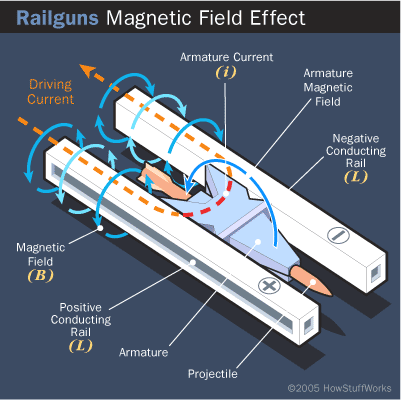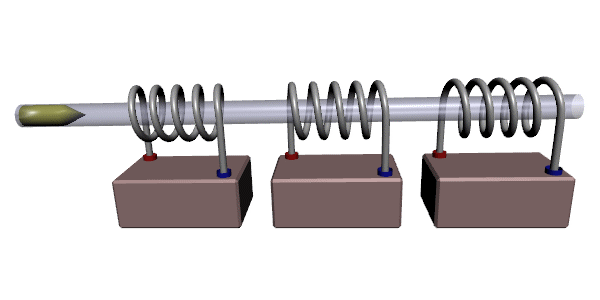Electromagnetic launchers, as the name implies, use electric and magnetic effects to launch projectiles. This offers several benefits over conventional gunpowder or rocket fuel, which are both inherently dangerous and expensive. Electromagnetic launchers have been a growing topic of interest in both the civilian and military sectors because of the precise control that's possible over acceleration profiles and the attainable projectile speeds that can be significantly higher than those of a conventional cannons and at a small fraction of the cost of rockets. These qualities also make electromagnetic launchers ideal for replacing shipboard cannons and missiles with a cheaper and faster alternative without sacrificing firepower.
There are two main types of electromagnetic launchers: Railguns and Coilguns.

Railguns use a pair of rails bridged by a conductive armature connected to the projectile. Current flowing between the rails and through the armature causes an effect known as the Lorentz force which accelerates the armature forward between the rails. A railgun can typically launch projectiles at velocities so large that, even though no explosive propellant is used, the energy at impact is enough to annihilate targets.

Coilguns typically use a series of coils acting as pulsed electromagnets to accelerate a magnetic projectile through the coils. When an electric current pulse passes through a coil, eddy currents are induced in the armature that produces a magnetic field that, in turn, produces a force. By timing the current pulses properly, the armature can be accelerated to very high velocities. The more coils and the greater the current through them, the higher the velocity that the projectile can reach.